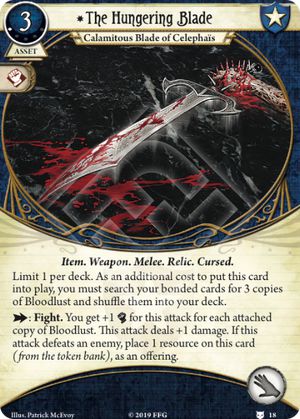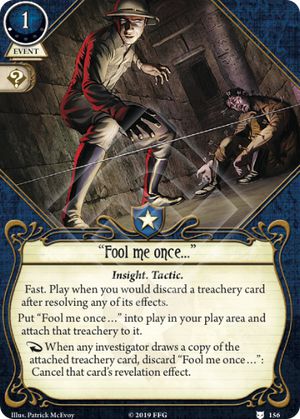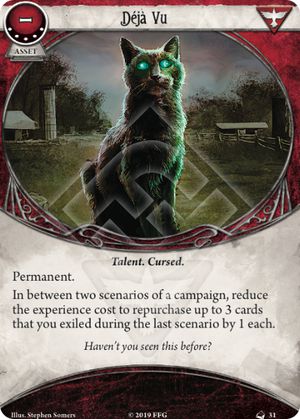
I initially dismissed this as an option in Nathaniel Cho but after giving it a shot, it might be a decent option in him. It has the same use case as Mark, with Cho not really needing the extra from weapons. It also works alongside Boxing Gloves, if you're willing to run Bandolier so you can have both. The fact that it's a one-off weapon is also mitigated by the fact that Cho doesn't really need weapons over his fight events, and his unique card can search a weapon.
Is this good? Well, the obvious downside is that as soon as the blade's out, you need to kill with the blade, and not kill with fight events. Cho's fight events range from 2 damage utility events - Clean Them Out, ["Get over here!"], and the lower levelled Counterpunch and Heroic Rescue - 3 damage events like Monster Slayer, Mano a Mano and the levelled Counterpunch, to the big guns of Dynamite Blast and One-Two Punch. So if an enemy has 3 health, do you use a 3 damage Cho event or a 2 damage one followed up by a Hungering Blade hit? Or do you not waste the event and just hit twice with the blade? In that case, is there much point in running the blade at all when you could just hit with an event then make a normal punch? Obviously the more enemies on you, the better - you can finish off a 2-4 health enemy with an event followed by a blade hit, then kill a 1-2 health enemy with a blade hit to get 2 charges, but whether this is going to happen frequently is questionable.
Perhaps you can simply run fewer damage events, and more utility spirit-traited events like Stand Together or "I've had worse…". But then what happens if you never draw the blade?
If you have the blade but not the gloves, you can save up on fight events while just killing with the blade. If you have the gloves but not the blade, you can use the events faster and search into more, thinning the deck to make the blade a more likely draw. But if you don't draw either, you're in trouble without weapon searching tools.
I think there may be a balance between fight and utility events that can make this work, depending on the scenario. My main problem with building Nathanial before I got Dream Eaters has been that there's only really one deck for him - load up on fight events and ways to draw boxing gloves. But The Hungering Blade makes me think there are some more niche builds that might have a place in him. I enjoyed the build on my first try, but I think a little more testing is required. Still, it's a deck I'm happy to test.



